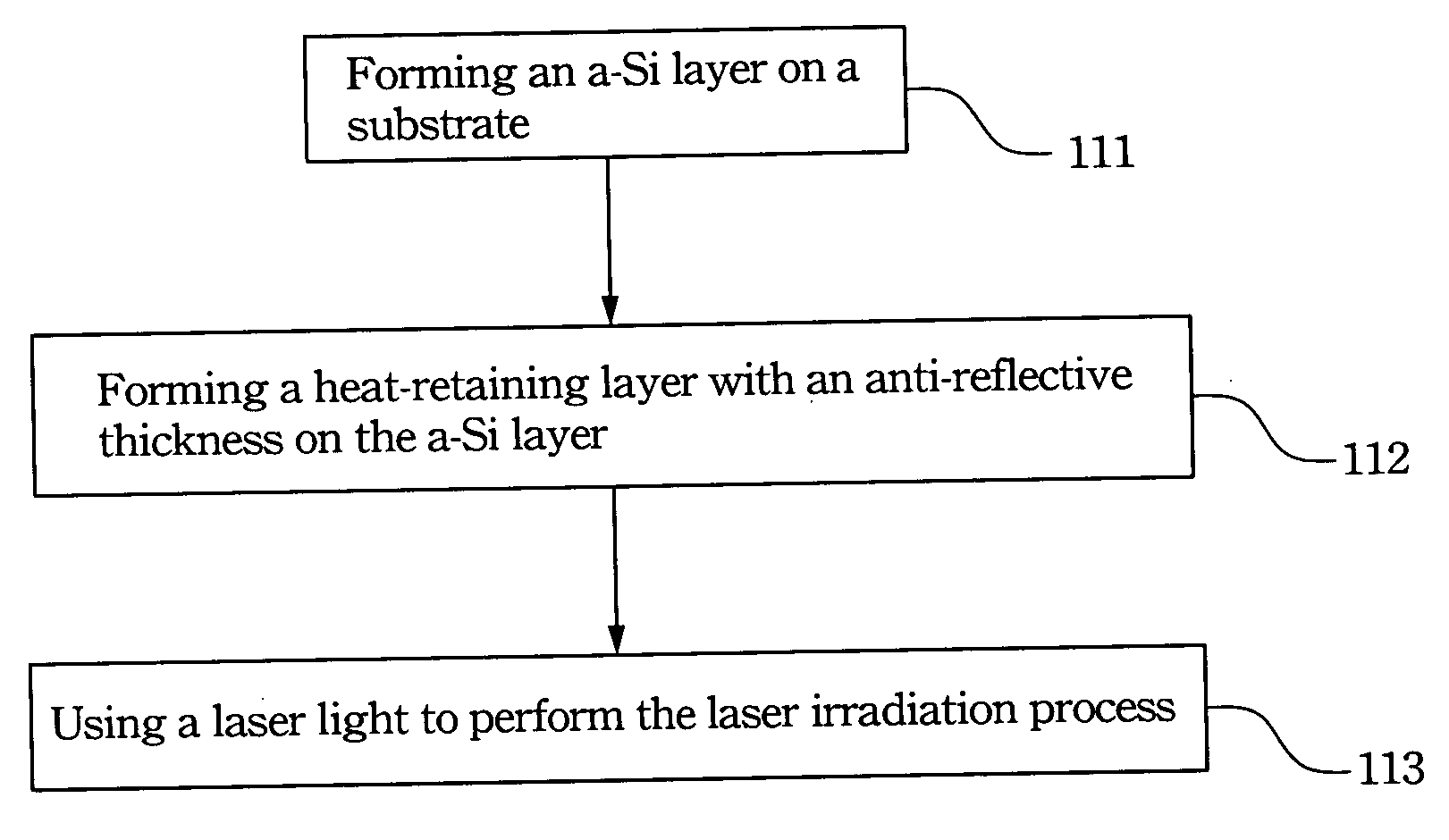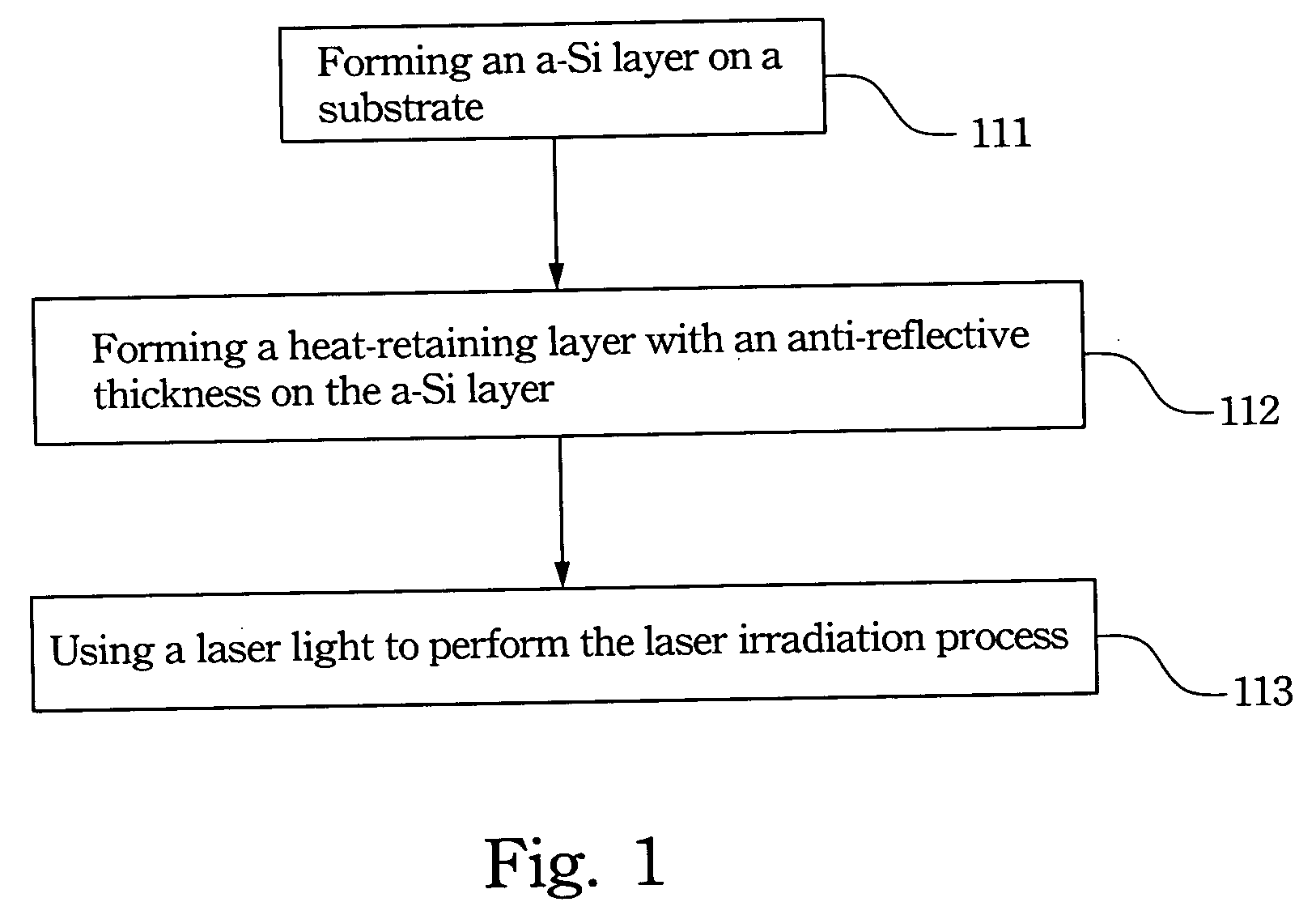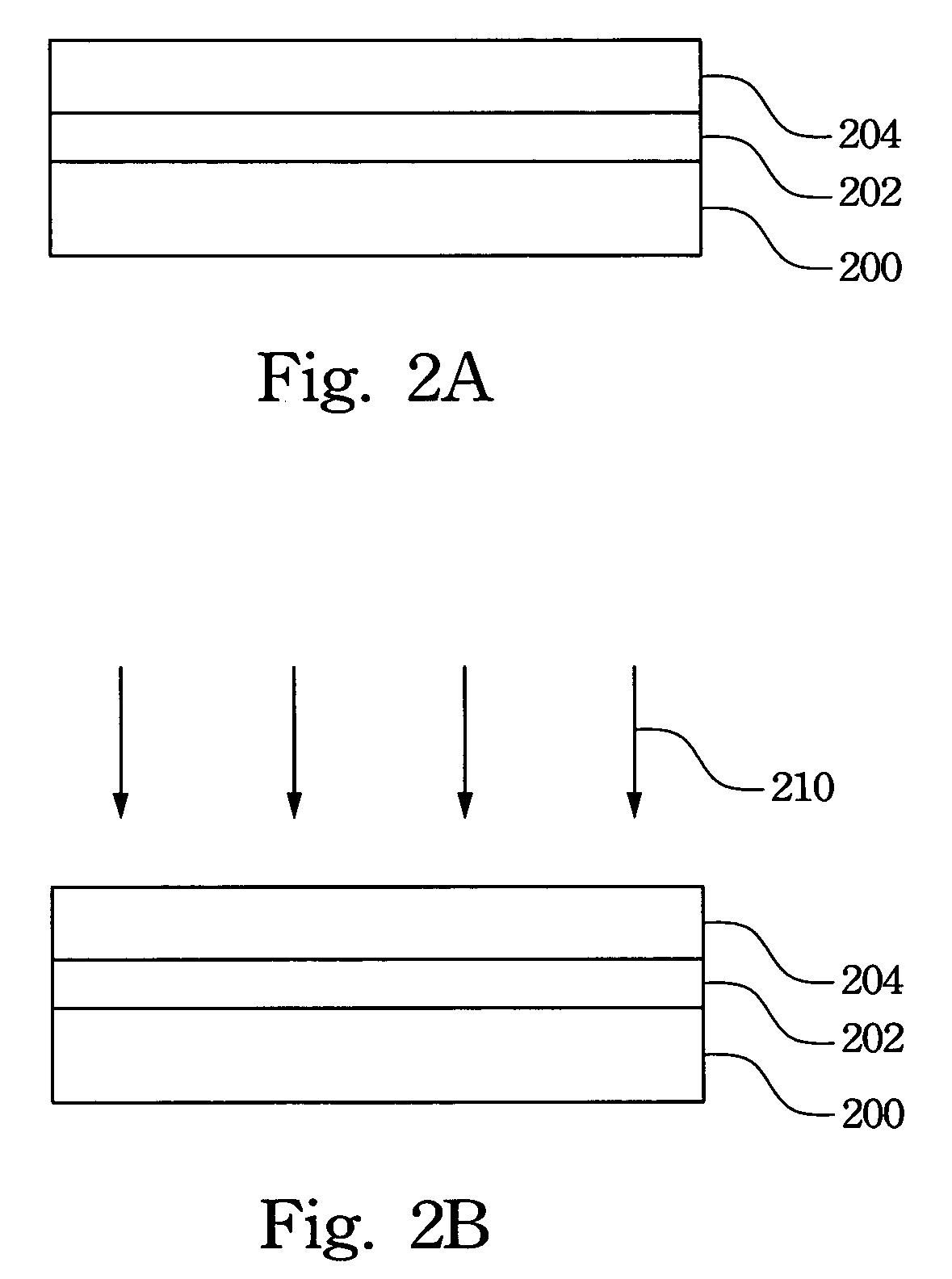Method of enhancing laser crystallization for polycrystalline silicon fabrication
a technology of laser crystallization and polycrystalline silicon, which is applied in the direction of basic electric elements, electrical apparatus, and semiconductor devices, can solve the problems of limited electrical characteristics of polycrystalline silicon thin film, inapplicable high-performance flat panel displays, and significant influence on the device performance of polycrystalline silicon tfts such as carrier mobility, so as to enhance the growth of amorphous silicon crystallization, improve laser crystallization effect, and improve the effect of laser energy utilization
- Summary
- Abstract
- Description
- Claims
- Application Information
AI Technical Summary
Benefits of technology
Problems solved by technology
Method used
Image
Examples
embodiment 1
[0024] The present invention discloses a method of enhancing laser crystallization for polycrystalline silicon fabrication. A semitransparent material is used as the heat-retaining layer capped on the amorphous silicon layer to lengthen the amorphous silicon melting time in a laser irradiation process. When the laser irradiation process is performed, a portion of the laser energy passes through the heat-retaining layer to effect the melting of the amorphous silicon layer, while another portion is absorbed by the heat-retaining layer to continuously heat the melted amorphous silicon layer and hence lengthen the cooling time of melted amorphous silicon. Crystallization of the amorphous silicon layer is thus improved to further enhance grain growth for forming a high quality polycrystalline silicon layer with large grains.
[0025] However, the heat-retaining layer is not only semitransparent, but reflects incident laser light in general, so the laser energy used cannot be transmitted to...
embodiment 2
[0036] The present invention discloses another method of enhancing laser crystallization for polycrystalline silicon fabrication. Two heat-retaining layers are utilized to cap the amorphous silicon layer. Besides, anti-reflectivity to laser light is obtained by controlling the anti-reflective thickness of the two heat-retaining layers, and the two heat-retaining layers have a dielectric capability by choosing a suitable material as the heat-retaining layers for TFT device fabrication.
[0037] Referring to FIGS. 4A-4B, FIGS. 4A-4B are cross-sectional schematic diagrams showing the process for enhancing laser crystallization in accordance with the second preferred embodiment of the present invention. First, referring to FIG. 4A, an amorphous silicon layer 402 is formed on a substrate 400 by, for example, PECVD or PVD, and dehydrogenation is then performed on the amorphous silicon layer 402 to prevent a hydrogen explosion during the subsequent laser annealing.
[0038] Then, a first heat-...
PUM
 Login to View More
Login to View More Abstract
Description
Claims
Application Information
 Login to View More
Login to View More - R&D
- Intellectual Property
- Life Sciences
- Materials
- Tech Scout
- Unparalleled Data Quality
- Higher Quality Content
- 60% Fewer Hallucinations
Browse by: Latest US Patents, China's latest patents, Technical Efficacy Thesaurus, Application Domain, Technology Topic, Popular Technical Reports.
© 2025 PatSnap. All rights reserved.Legal|Privacy policy|Modern Slavery Act Transparency Statement|Sitemap|About US| Contact US: help@patsnap.com



